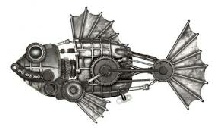



 NEXT
NEXT
 BACK
BACK
 Forum
Forum


Philosophical musings on Quanta & Qualia; Materialism & Spiritualism; Science & Religion; Pragmatism & Idealism, etc.




Biological
Machines
Evolve
Post 100. September 22, 2019 continued . . .
Body, Soul, and Information
Living Machines that Evolve
Another metaphor for Information compares it to the software in a computer. Referring to the bio-
Living things are also adaptable, in that they can dramatically change their configuration over time. “Of all the astonishing capabilities of life, morphogenesis – the development of form – is one of the most striking.” Just as an acorn can grow into a mighty oak tree, a single germ cell can evolve from an amorphous blob into a beautiful swan, or a huge elephant, depending on the content of the cell and the context of the environment. We now know that the blueprint or recipe for that transformation is stored in the chemical form of DNA. But the complex stages of development seem so miraculous that it sometimes seems as-
The book has a chapter entitled “Darwinism 2.0”, which updates the 19th century theory of evolution in view of our 21st century understanding of how abstract Information works its magic. At first, the theory was interpreted with emphasis on the randomness of mutations, which provided the options from which Nature “selected” those best suited for the current environment. But now, we can better understand how those adaptive “choices” are made. Davies quotes biologist Eva Jablonski who, “describes adaptive mutations as an ‘informed search’”, concluding that the “evolutionary past has constructed a system that supplies intelligent hints about where and when to generate mutations”. This would have been biological heresy a century ago. But he points to “recent experiments displaying a Lamarckian flavour . . . That nature selected not just the fittest organisms, but the fittest survival strategies too.” From this new evidence, he concludes that, “Life may therefore be described as an informational learning curve that swoops upwards.” But such a description would imply that evolution is progressive and goal-
Post 100 continued . . . click Next
Pouring plaster into a mold to create a bust
3. Morphogenetic Field :
A hypothetical field, similar to a magnetic field, that was once supposed to guide the formation of organisms into their proper locations, shapes, and inter-

The Demon In The Machine
How the hidden webs of information are solving the mystery of life
Paul Davies
Physicist & Cosmologist
”What gives living things that enigmatic oomph . . .?”

